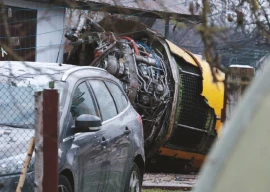
The flexible habitat, known as the Bigelow Expandable Activity Module (BEAM), is part of an experiment to test expandable habitats astronauts might use on the Moon or Mars in the coming decades.
NASA's Kepler telescope finds largest trove of exoplanets
"We ran into higher forces than we believe our models predicted," Jason Crusan, director of Advanced Exploration Systems at NASA, told reporters.
"At that point in time we decided to stand down the pressurization operation," he said of the decision to stop after two hours on Thursday.
He added that "the primary force that we believe that we're working against is friction forces between the fabrics."
Bigelow, which developed the first-of-its-kind habitat as part of an $18 million contract with NASA, said it fully supported the decision to pause the expansion.
"The BEAM spacecraft has been in a packed state for a significantly longer time than expected," Bigelow said in a statement.
China aims for manned moon landing by 2036
"It has undergone a tremendous squeeze for over 15 months, which is 10 months longer than planned. Therefore, there is a potential for the behavior of the materials that make up the outside of the spacecraft to act differently than expected."
Fully expanded, the module should reach a size of 13 feet long (four meters) by 10.5 feet (3.23 meters) wide.
The initial plan was for astronauts to venture inside multiple times over the next two years to take readings from sensors inside the pod and to test how well it might protect against space radiation.
First rocket launch from Russia's Vostochny after delay
NASA said that if the expansion runs into problems on Saturday, they may deflate the habitat and try again in the coming days.
"We are very confident that we will get it fully expanded at some point in time," said Crusan.

1721377568-0/BeFunky-collage-(18)1721377568-0-165x106.webp)





















COMMENTS
Comments are moderated and generally will be posted if they are on-topic and not abusive.
For more information, please see our Comments FAQ